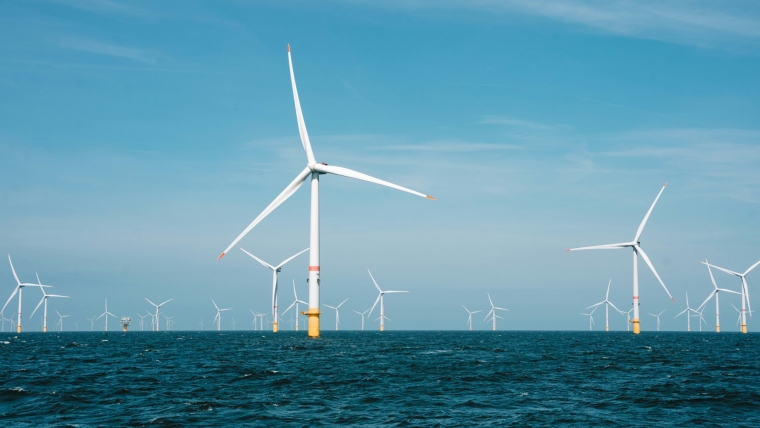
The inclusion of a seabed mining project in the Government’s Fast-track Approvals Bill could kill two offshore wind farm developments which were being explored in Taranaki.
Newsroom first reported on Thursday that Spanish firm BlueFloat Energy was canceling its plans to build wind farms in New Zealand partly due to the “allocation of the seabed”.
This is likely related to the inclusion of a Taranaki seabed iron sands mine in the Fast-track Approvals Bill, which gives it ministerial endorsement and top priority for resource consent.
The offshore wind industry in May warned that allowing seabed mining would make it impossible to build offshore wind farms in that specific area for the foreseeable future.
New Zealand’s best sites for the lowest cost offshore wind projects could be blocked until at least the 2070s and make it harder to reduce energy prices and achieve climate goals.
Seabed mining may even rule out the possibility of building wind farms on adjacent sites as it could amplify the environmental impacts of both developments. There are not any examples of the two industries co-existing anywhere in the world.
“Whilst we acknowledge that the seabed mining could generate its own economic benefits for New Zealand, we encourage decision makers to balance those benefits against the opportunity costs, both economic and environmental, that would result from the lost investment in offshore wind projects in the region and for New Zealand,” the industry said.
One of the signatories to this letter was Taranaki Offshore Partnership, a joint-venture between the NZ Super Fund and Copenhagen Infrastructure Partners.
It has proposed the construction of up to 70 wind turbines in the South Taranaki Bight. This could generate up to a gigawatt of power—enough for 65000 homes—and repurpose existing energy infrastructure.
Giacomo Caleffi, Copenhagen Infrastructure Partners’ development manager, said they were still “firmly committed” to exploring the project but understood BlueFloat’s concerns.
Having the iron sands mine fast-tracked added a lot of uncertainty to these projects and would discourage investors from putting capital into them — particularly if the Government didn’t seem supportive of the industry.
“We can’t minimize the impact that signals like this send,” Caleffi said, “[but] this Government does want offshore wind and so we are trying to clarify the signals”.
Speaking in Parliament, on behalf of Energy Minister Simeon Brown, Chris Bishop said there were opportunities for both seabed mining and offshore wind in New Zealand.
It was “really exciting” that there were international investors wanting to put money into New Zealand’s energy infrastructure, and denied the Fast-track was responsible for the Spanish firm withdrawing from the country.
“Ultimately, the investments that may or may not be made in that wind resource will be made by the market, and we will leave it up to the market to decide where to invest,” he said.
Prime Minister Christopher Luxon has made attracting more foreign investment into New Zealand a top priority for his government and the Fast-track Bill was intended to support that.
Trans Tasman Resources, which wants to mine for iron sands, is also an international company and would bring investment into the region.
Megan Woods, the Labour Party’s energy spokesperson, said the Government was literally driving international investment away from “badly needed electricity generation”.
“We're talking about an industry that could add up to 12,000 jobs in New Zealand and provide tens of billions of dollars of GDP to the New Zealand economy,” she told reporters.
“This Government is putting not only our energy security at risk, but they're putting New Zealand jobs and New Zealand economic development opportunities at risk”.
Bishop said any offshore wind development was still years away and even the most “optimistic timeframes” wouldn’t see projects come to market until the mid-2030s.
“This is not a thing that's about to start tomorrow. There is no legal regime for offshore wind in New Zealand. That's why we're developing one”.
16 Comments
As a nation, relative to its actual size, NZ has a very long coastline. It is unfortunate then that these two enterprises happen to be in conflict over access to the exact same territory.
Them and the fisherfolk. The bight is a world-class wind resource - few like it. Plenty of other places for ironsand up and down the coastline, but of course the bight has easy access which the Aussies want.
True, but not the major point here.
This is ideology vs ideology, both based on ideological assumptions which are incorrect (funny, how otherwise intelligent people can fail to think; Uptom Sinclair's famous line comes to mind). Brown is dangerously close to a closed-mind ideologue - dangerous territory. Not sure yet if Bishop has redeeming features.
Firstly, offshore wind won't go much past the demise of fossil energy (cannot run unsupported, and certainly cannot build its own replacement parts). Secondly, it is too maintenance-demanding (which is related to the first. I'm no knocker; I tried wind at home (not consistent enough) and have used it for long periods at sea.
But seabed mining is the dregs of mineral-collation; by the time we're down to that, all bets are off. You can do it as an adjunct to other less energy-demanding mining, but society as whole cannot operate on that low a return (not many people get that part).
Overshooting Earth's Boundaries | Bill Rees - YouTube A good journalist (rare, that) and a Systems-savvy Professor; by the time you're through, this article can be placed appropriately in the picture...
Edit - and it also puts the 'first class fishing resource' comment in context...
wind is far more consistent offshore, and at the higher installation heights that commercial farm reach. With power benig the cube of windspeed, residential wind is hopeless.
10m/s @ 100m elevation on the south Taranaki Blight
5m/s @ 10m elevation inland Karitane
Not really a fair comparison , you would have to compare the wind speed at the same height at the different places.
But generally , Wind speed is higher at sea because there are no obstructions . and it generally cubes the higher you go .
On land a wind turbine at less than 6 metres high is a waste of time . going to 12 metre will almost certainly double your power. any buildings,trees or other obstructions will halve it again, and the turbulence will wreck the wind turbine eventually . Edge of cliffs etc are no good either. Turbulence as the wind boils over the edge. it takes a lot of research to get the ideal site , old timers say fly a kite ,( if it doesnt stay relatively still the sites no good) but i've never been able to , I usually say put a small turbine and see how it goes for a year or two .
Looking at how the trees grow is one of the best indicators.
great map though.
It's a fair comparison... i was rebutting the 'winds not consistent enough' comment by comparing the likely winds the offshore windfarms mentioned in this article would see, with the sort of wind speed you would have got putting one on your own property.
Who said "first class fishing resource"?
Sorry, my bad.
World class wind resource? Yes, technically. But where humanity is headed, not sure the complexity is maintainable.
Consider me soothed.
Double win for the fossil fuel lobby. National's donors will be very happy.
Treason
Ironsand is already mined at North Waikato head, and Taharoa. why can these not be expanded ?
Perhaps the scale been proposed might be relevant , up to 50 million tonnes per year.
Iron sand has an average density of 1280 kg per m3, transposing this gives 39 million square metres per year. A mere 15 625 full olympic swimming pools worth .
Maybe PDK can calculate the energy required just to move this stuff., beyond me , but I think we can grasp its not a small amount.
Adverse enviromental effect from moving this much sand, and at least double the amount of water, she''ll be right , what are they on about???.
The fast-track legislation is a shambles. The select committee report introduces some strange amendments that could put a lot of people off using it, by introducing risk around decision making and increasing chances of judicial reviews. It is also going to be ultra expensive.
We aren't having the discussion we need to be having.
What are the iron sands for? And what do we think the electricity will power?
The usual BS is 'could power xyz houses', or 'will provide xyz jobs'. Both are irrelevant. The only question, of either ideology, is: Can this be maintained long term?
And in both cases (one-off fossil energy being used to mine a one-off resource; offshore wind ex fossil energy support) the answer is no.
"What are the iron sands for? And what do we think the electricity will power? "
Iron sand is to make steel for turbines, electricity is to allow for green forges. It's win win /s

We welcome your comments below. If you are not already registered, please register to comment
Remember we welcome robust, respectful and insightful debate. We don't welcome abusive or defamatory comments and will de-register those repeatedly making such comments. Our current comment policy is here.